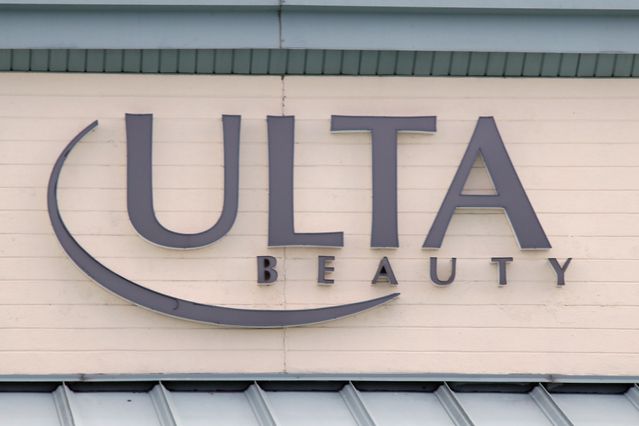[ad_1]
Text size

Photo by Bruce Bennett/Getty Images
From home goods to electronics, many inflation-weary consumers are putting off discretionary purchases to pay for essentials. Yet just like beauty, what’s essential may be in the eye of the beholder—and makeup may fit the bill.
The beauty category’s resiliency is so well-known that it has its own moniker: The “lipstick effect,” which can also refer to other types of small indulgences that consumers find money for during a downturn. While we’re not officially in a recession, this pattern already on full display: Shoppers may be replacing cosmetics that expired during the pandemic, and they’re also more likely to refresh their vanities with new products as social and professional events resume.
Take
Ulta Beauty
(ULTA): On Thursday, the company posted great results for its fiscal second quarter and released a strong full-year outlook which it attributed to “strong consumer demand and broad-based momentum.” It’s not the only good news, either. When Ulta posted first quarter earnings results in late May, the company said that cosmetics sales had finally returned above pre-pandemic levels—and at a fast clip, climbing 12% from 2019.
For most months this year, visits to Ulta stores have outpaced their 2021 and 2019 levels, according to data from analytics firm Placer.ai. In fact, foot traffic was up 12.6% and 6.6% year over year in June and July, respectively. In-person traffic was up 21.3% in June and and 30.6% in July compared to 2019—a particularly strong showing, given that this summer brought profit warnings from big box stores who said inflation was curbing discretionary purchases
Ulta isn’t alone:
e.l.f. Beauty
(ELF) delivered a beat-and-raise quarter earlier this month. Chief financial officer Mandy Fields told Barron’s that the company’s budget-conscious consumers were still finding a way to keep up with their skin care regimes they adopted during the pandemic—even as they returned to wearing more makeup. Shares are up nearly 12% so far this year, putting e.l.f. Beauty, the top-performer of the group, well ahead of the broader market. E.l.f. stock has gained 39% since Barron’s recommended it last year.
Coty
(COTY) on Thursday upped its full-year forecast, as it, too, has seen a strong response from consumers. Both its prestige and mass beauty products saw higher sales in the quarter, with the former leading the way with a 20% jump, consistent with other higher-end retailers that have seen ongoing demand.
While
Estee Lauder
’s
(EL) guidance is an outlier, the company’s most recent downbeat forecast largely stem from international woes—such as ongoing travel in China and the war Ukraine. As Barron’s noted when it highlighted the shares in 2020, the Estee Lauder typically hasn’t seen big dents in its business from recessions. Likewise, Ulta’s performance during the Great Recession showed consumers’ priorities. Ulta’s same-store sales dipped a to relatively modest mid-single-digit level late in late 2008, Ulta’s worst quarter of that downturn, compared to double-digit declines for other discretionary companies.
Something positive for beauty investors to consider? Survey work from analyst firms such as Cowen & Co. and Jefferies have pointed to consumers’ continuing intentions to spend on beauty products in recent months, even as they’re more prone to cut back in other areas like dining out or apparel.
That’s good news for the industry as a whole, but Ulta still may look like the best beauty option for investors: Ulta’s delivered a string of strong earnings, but its shares are nearly flat so far this year, and change hands for less than 19 times forward earnings. That’s cheaper than its historical average of more than 23 times—and makes Ulta a bargain compared to e.l.f., Estee Lauder, and
Coty
.
Meanwhile average analyst estimates for this year and next have been moving higher, and Ulta’s expected long-term earnings growth stands at a hefty 36.6%.
That could earn investors a pretty penny.
Write to Teresa Rivas at [email protected]
[ad_2]
Source link











